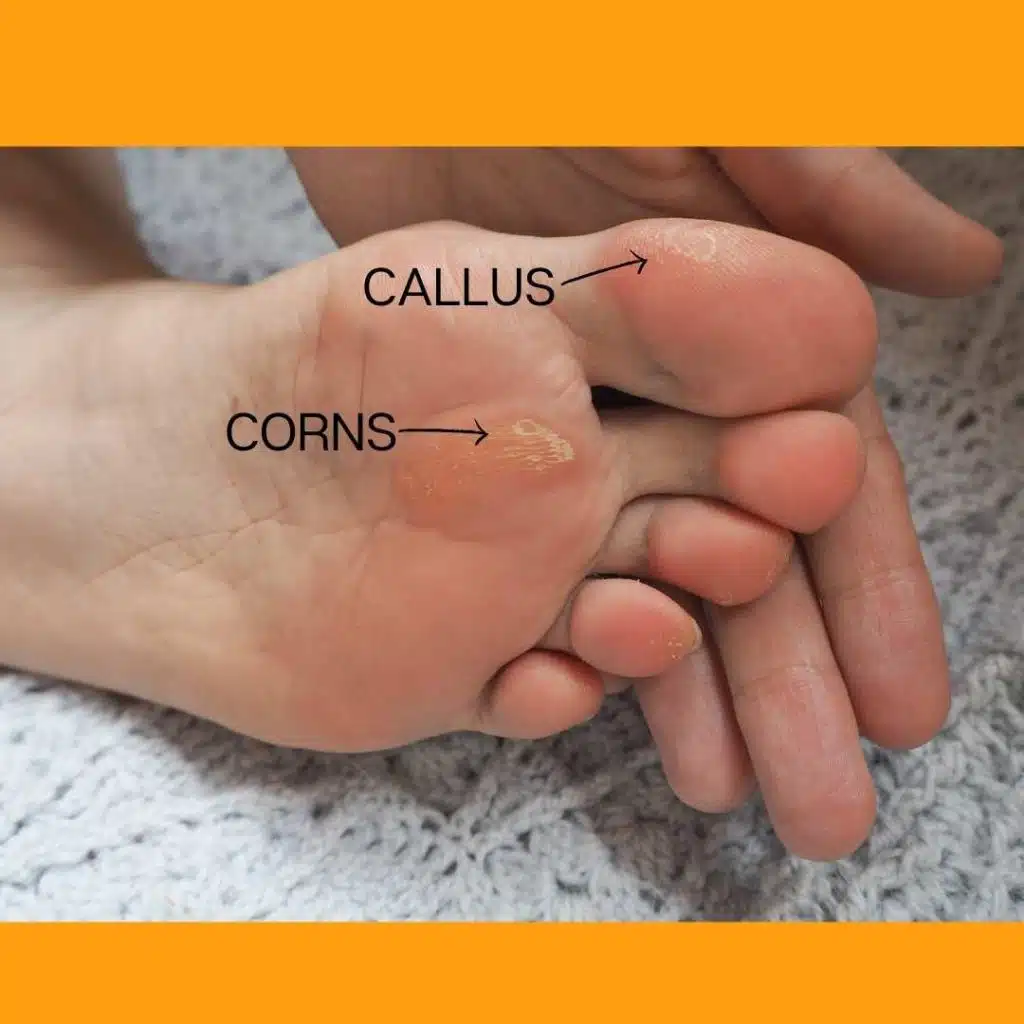Calluses and corns are common skin conditions that develop as a response to repeated pressure or friction. Though they serve as protective mechanisms, they can cause discomfort or pain if left unmanaged. This article delves into the causes, symptoms, preventive measures, and treatment options for calluses and corns, providing actionable insights for maintaining healthy feet.

What Are Calluses and Corns?
Calluses and corns are thickened layers of skin that form to protect sensitive tissue underneath. Despite their similarities, they have distinct characteristics:
- Calluses: Larger, flatter areas of hardened skin, typically found on weight-bearing parts of the feet, such as the heels and balls of the feet. Calluses are often painless.
- Corns: Smaller, more defined areas of hardened skin that can be painful. They often develop on non-weight-bearing parts of the feet, like the tops or sides of toes.
Causes of Calluses and Corns
Several factors contribute to the formation of calluses and corns:
- Repetitive Pressure or Friction: Activities that put continuous stress on certain areas of the feet, such as walking or running.
- Ill-Fitting Footwear: Shoes that are too tight, too loose, or have inadequate cushioning.
- Foot Abnormalities: Conditions like bunions, hammertoes, or high arches can increase pressure points.
- Occupational Hazards: Jobs requiring prolonged standing or specific footwear, such as steel-toe boots.
- Poor Foot Hygiene: Accumulation of sweat and dirt can exacerbate skin irritation.
Symptoms of Calluses and Corns
Recognizing the symptoms can help in early intervention:
- Calluses:
- Rough, thickened patches of skin.
- Yellowish or grayish discoloration.
- Reduced skin sensitivity in the affected area.
- Corns:
- Hardened, circular patches of skin.
- Central core that may be soft or hard.
- Pain or tenderness when pressed.
Preventing Calluses and Corns
Prevention is key to avoiding the discomfort associated with these conditions. Here are some tips:
- Choose Proper Footwear: Opt for shoes that fit well and provide adequate support.
- Use Protective Padding: Cushioned insoles or corn pads can reduce pressure.
- Maintain Foot Hygiene: Regularly wash and moisturize feet to keep skin healthy.
- Trim Toenails Properly: Avoid sharp edges that can cause additional pressure.
- Alternate Footwear: Rotate shoes to prevent localized stress on specific areas.
Treatment Options for Calluses and Corns
Effective treatments can alleviate discomfort and prevent recurrence:
At-Home Remedies
- Soaking: Soak feet in warm, soapy water to soften the skin.
- Exfoliation: Gently remove excess skin using a pumice stone or foot file.
- Moisturizing: Apply a rich moisturizer to hydrate and soften the skin.
- Protective Pads: Use non-medicated pads to cushion the area.
Medical Treatments
- Debridement: A healthcare professional can safely remove thickened skin.
- Medicated Creams: Salicylic acid-based creams help dissolve hardened skin.
- Orthotics: Custom inserts can redistribute pressure and reduce friction.
- Surgery: In severe cases, surgical intervention may be necessary to address underlying foot deformities.
When to See a Doctor
Seek professional help if:
- Calluses or corns become very painful.
- There are signs of infection, such as redness, swelling, or discharge.
- You have underlying health conditions like diabetes, which can complicate foot problems.